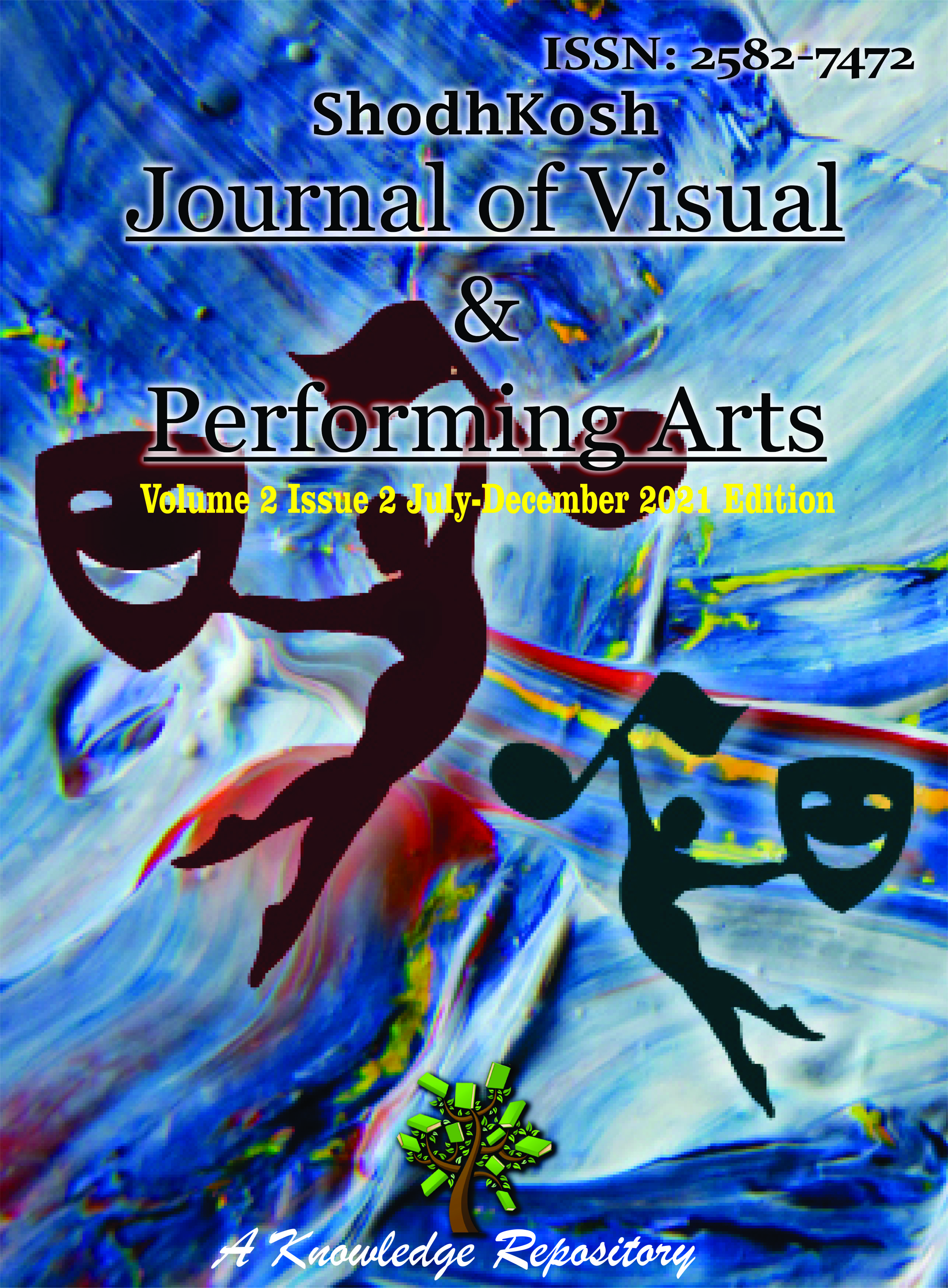EMERGING ASSESSMENT PRACTICES IN MULTIMODAL TEACHING PEDAGOGY IN ENGLISH LANGUAGE TEACHING
DOI:
https://doi.org/10.29121/shodhkosh.v2.i2.2021.4671Keywords:
Multimodal Pedagogies, Mode, Student Centered Approach, Identity, English As Second Language (Esl), Learner Investment, Autonomy, Inclusive And Mixed Ability Classroom.Abstract [English]
Second language learning process is intricate and contemporary research in multimodality can provide direction to teachers and policy makers to have more inclusive ESL classrooms. An unparalleled surge of interest and activity has been observed in research and practice in the field of multimodality in English language learning in recent times. The inter weave of digital technology with language teaching has exhibited results related to rewarding learning experiences. Availability of abundant research data on benefits like creating audience and genre awareness, improved motivation level of learners and investment in language learning, identity development, multimodal communicative proficiency and second language competence has established multimodal teaching pedagogy as a vital approach in changing times. In addition, it has helped create learner autonomy. One of the challenging aspects for the successful implementation of multimodal pedagogy is related to preparing an assessment framework. This article offers useful insights into the assessment framework of multimodal Pedagogy in Context of English Language Classroom and its effects on learners as well as its implications for teachers.
References
Bezemer, J., and G. Kress. Multimodality, Learning and Communication: A Social Semiotic Frame. Routledge. Accessed 2015. DOI: https://doi.org/10.4324/9781315687537
Vasudevan Lalitha, Schultz Katerine & Bateman Jenifer. (2010). Rethinking composing in a digital age: Authoring literate identities through multimodal storytelling. Written Communication. 27(4), 442-468 DOI: https://doi.org/10.1177/0741088310378217
Purcell Kristen, Buchanan Judy, & Friedrich Linda. (2013) How Teachers Are Using Technology at Home and in Their Classrooms. Pew Research Center.
VINOGRADOVA, POLINA, et al. ““Listen to My Story and You Will Know Me”: Digital Stories as Student-Centered Collaborative Projects.” TESOL Journal, vol. 2, no. 2, June 2011, pp. 173–202, https://doi.org/10.5054/tj.2011.250380. Accessed 6 Jan. 2020. DOI: https://doi.org/10.5054/tj.2011.250380
Norton, Bonny. Identity and Language Learning: Gender, Ethnicity and Educational Change. Pearson Education Limited., 2000.
Norton, Bonny. Identity and Language Learning: Extending the Conversation. Multilingual Matters, 2013. DOI: https://doi.org/10.21832/9781783090563
Norton, Bonny. “Language and Identity.” Sociolinguistics and Language Education. Edited by Hornberger and S. McKay. Multilingual Matters, 2010. pp.349-369. DOI: https://doi.org/10.21832/9781847692849-015
C. & Kimber, K. (2010, forthcoming). Working multimodally: Challenges for assessment. English Teaching: Practice and Critique, December 2009, Volume 8, Number 3 pp. 70-90
Sadler, D. (1989). Formative assessment and the design of instructional systems. Instructional Science, 18, 119-144. DOI: https://doi.org/10.1007/BF00117714
Bearne, E. (2009). Assessing multimodal texts. In A. Burke & R. Hammett (Eds.), Assessing new literacies: Perspectives from the classroom (pp. 15-33). New NY: Peter Lang Publishing
WYATT-SMITH, CLAIRE. “Working Multimodally: Challenges for Assessment.” English Teaching: Practice and Critique, vol. 8, no. 3, 5 Dec. 2009, pp. 70–90.
Hung, Hsiu‐Ting, et al. “Multimodal assessment of and for learning: A theory-driven design rubric.” British Journal of Educational Technology, vol. 44, no. 3 DOI: https://doi.org/10.1111/j.1467-8535.2012.01337.x
Downloads
Published
How to Cite
Issue
Section
License
Copyright (c) 2021 Dr. Sejal Harbhadrasinh Sarvaiya

This work is licensed under a Creative Commons Attribution 4.0 International License.
With the licence CC-BY, authors retain the copyright, allowing anyone to download, reuse, re-print, modify, distribute, and/or copy their contribution. The work must be properly attributed to its author.
It is not necessary to ask for further permission from the author or journal board.
This journal provides immediate open access to its content on the principle that making research freely available to the public supports a greater global exchange of knowledge.




























